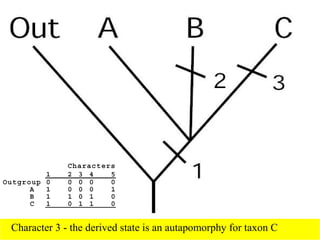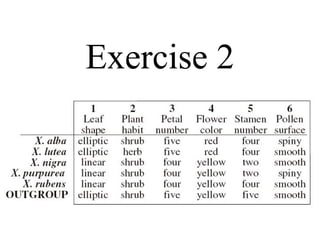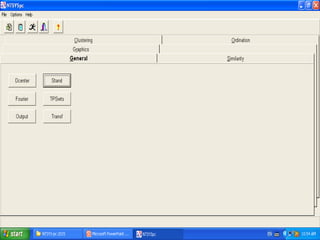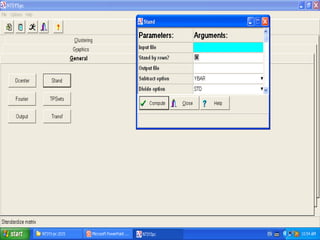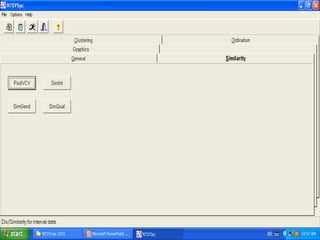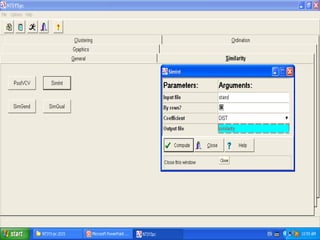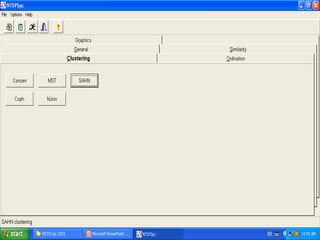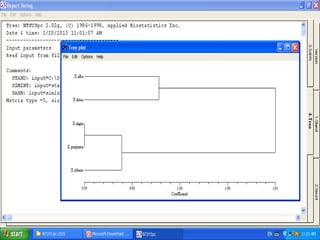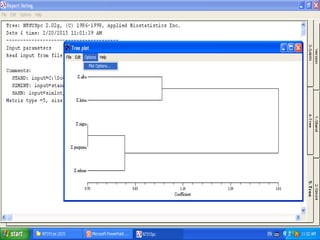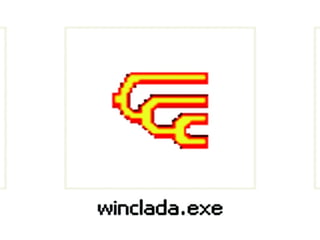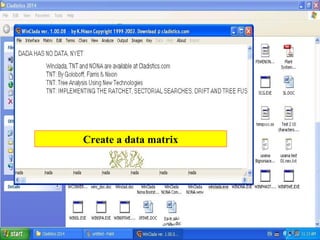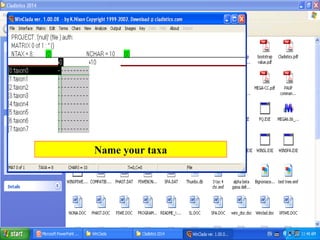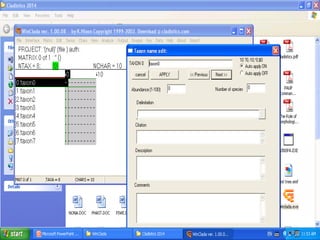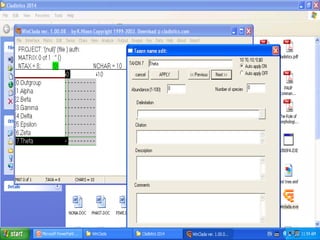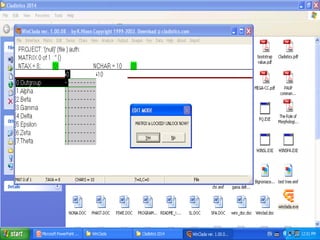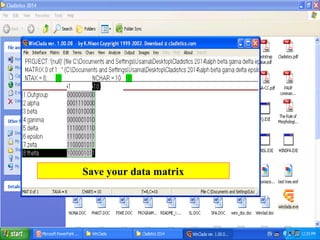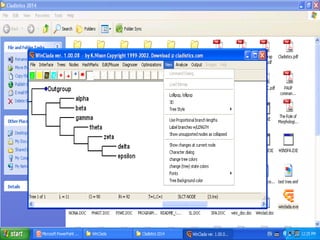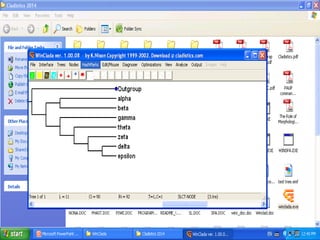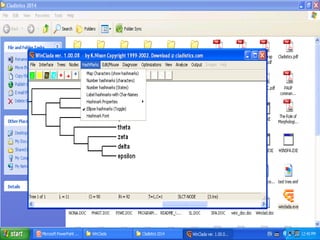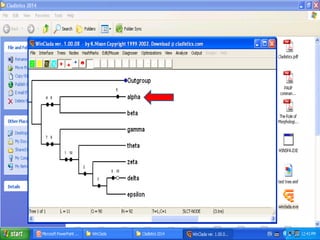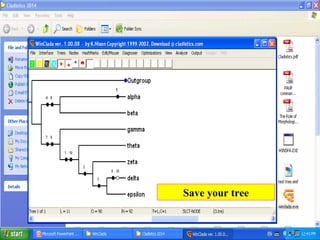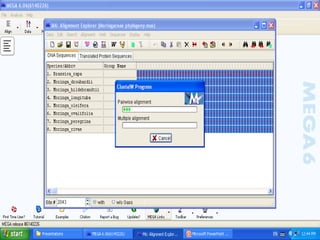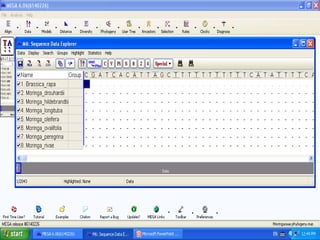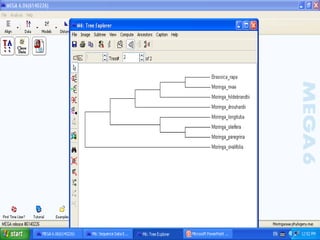Basics of Cladistic Analysis Workshop
- 6. The method that groups organisms that share derived characters is called cladistics or phylogenetic systematics
- 9. The first step (Tree polarity) •Determine which character states are primitive and which are derived. • Plesiomorphic character (Prim itive), • Apomorphic character (Derived)
- 10. If a taxon that is not a member of the group of organisms being classified has a character state that is the same as some of the organisms in the group, then that character state can be considered to be plesiomorphic. The outside taxon is called the outgroup and the organisms being classified are the ingroup.
- 12. 1. Any hypothesis that requires fewer assumptions is a more defensible hypothesis.
- 16. Exercise 1
- 17. The information in character 1 unites taxa A, B, and C because they share the apomorphic state.
- 18. Character 2 - the derived state is found only in taxon B. It is an autapomorphy of that taxon and provides no information about the relationships among the taxa
- 19. Character 3 - the derived state is an autapomorphy for taxon C
- 20. Character 4 - the derived state is a synapomorphy that unites taxa B and C
- 21. Character 5 - the derived state is an autapomorphy for taxon A
- 22. Construct a cladogram of the provided data matrix Five min.
- 23. Exercise 2
- 29. One of the most important uses of cladograms is as a basis for classification. A cladogram may be used to classify taxa phylogenetically.
- 65. Create a data matrix
- 68. Name your taxa
- 76. Enter character states in the form of (0/1)
- 79. Save your data matrix
- 87. Edite your tree
- 102. Save your tree
- 106. Autapomorphic character Synapomorphic character Sister taxa Homoplasious character


















